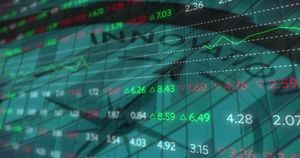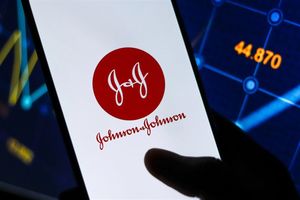The "Protein Labeling Global Market Report 2022: By Product, By Labeling, By Application" report has been added to ResearchAndMarkets.com's offering.
The global protein labeling market is expected to grow from $1.94 billion in 2021 to $2.13 billion in 2022 at a compound annual growth rate (CAGR) of 10.0%. The market is expected to reach $3.13 billion in 2026 at a CAGR of 10.1%.
Where is the largest and fastest growing market for the global protein labeling market 2020-2030? How does the market relate to the overall economy, demography and other similar markets? What forces will shape the market going forward? The Global Protein Labeling Market 2020-2030 market global report answers all these questions and many more.
Major players in the protein labeling market are Thermo Fisher Scientific Inc., Merck KGaA, PerkinElmer, Inc., General Electric Company, F. Hoffmann-La Roche AG, AGILENT TECHNOLOGIES INC., BIO-RAD LABORATORIES, Kirkegaard & Perry Laboratories, LI-COR Inc. and Kaneka Corporation.
The protein labeling market consists of sales of protein labeling products and related services by entities (organizations, sole traders and partnerships) that produce protein labeling products to diagnose various diseases. Protein labeling refers to the use of appropriate molecular labels to detect or purify proteins and their binding partners in tissues, cells, and biochemical assays.
The main types of products in protein labeling are reagents, protein, enzymes, probes or tags, monoclonal antibodies. Monoclonal antibodies are created by cloning a single white blood cell. Every subsequent antibody generated in this manner may be traced back to a single parent cell. The different labelling methods include in-vitro labeling, in-vivo labeling and is used in cell based-assay, fluorescence microscopy, immunological techniques, mass spectrometry, protein micro assay.
Increased spending on the R&D of proteomics and genomics is driving the growth of the protein labeling reagents market. Proteomics is the study of the overall protein content of a cell, tissue, or organism. Protein labeling methods before separation and analysis is essential during proteomic profiling approaches.
For instance, the National Institutes of Health (NIH) of the United States, funded $37 billion for biomedical research. This funding is for life sciences research that supports study at a molecular level for the understanding of fundamental processes by which diseases develop identification of biomarkers that signal the presence of disease, or identification of gene/protein responsible for the disease.
The Novo Nordisk Foundation granted a grant of up to $1.5 million to the University of Copenhagen to establish a mass spectrometry facility, which marks a new and exciting step in protein research. Therefore, the increased spending on research and development of proteomics and genomics is driving the market.
Drawbacks related to protein labeling techniques are expected to hinder the market. Label-free techniques are preferred over labeled techniques because of the drawbacks associated with them, such as wet-lab complexity and flexibility. While label-free samples can be measured without much preparation, wet lab pre-treatment is required for all labeling techniques. Samples must be labeled with metabolic (e.g. SILAC) or chemical (e.g. iTRAQ or TMT) reagents and the different conditions has to be combined.
Therefore, label-free techniques are less prone to wet lab errors than labeling techniques. Label-free approaches have the advantage of being highly adaptable even after the study has begun. New samples can be included at any time, but labeled approaches require the same number (n) of each condition. New samples may not be included in the study if they cannot be physically mixed and measured together with the control.
Labeled techniques such as the Super-SILAC approach reduce this problem but must also be carefully planned. These disadvantages are making label-free techniques preferable. Therefore, drawbacks associated with protein labeling techniques are expected to hinder the market.
Companies in the protein labeling market are increasing their product innovation through strategic collaborations. To sustain in the increasingly competitive market, companies are developing innovative products as well as sharing skills and expertise with other companies.
While companies have long collaborated with each other as well as academic and research institutions in this market by way of partnerships, in or out-licensing deals, this trend has been increasing over recent years. For instance, recombinant protein manufacturer enGenes Biotech GmbH (enGenes) announced a collaboration with ACIB GmbH for protein labeling.
Key Topics Covered:
1. Executive Summary
2. Protein Labeling Market Characteristics
3. Protein Labeling Market Trends And Strategies
4. Impact Of COVID-19 On Protein Labeling
5. Protein Labeling Market Size And Growth
5.1. Global Protein Labeling Historic Market, 2016-2021, $ Billion
5.1.1. Drivers Of The Market
5.1.2. Restraints On The Market
5.2. Global Protein Labeling Forecast Market, 2021-2026F, 2031F, $ Billion
5.2.1. Drivers Of The Market
5.2.2. Restraints On the Market
6. Protein Labeling Market Segmentation
6.1. Global Protein Labeling Market, Segmentation By Product, Historic and Forecast, 2016-2021, 2021-2026F, 2031F, $ Billion
- Reagents
- Protein
- Enzymes
- Probes/ Tags
- Monoclonal Antibodies
6.2. Global Protein Labeling Market, Segmentation By Labeling Method, Historic and Forecast, 2016-2021, 2021-2026F, 2031F, $ Billion
- In-vitro Labeling
- In-vivo Labeling
6.3. Global Protein Labeling Market, Segmentation By Application, Historic and Forecast, 2016-2021, 2021-2026F, 2031F, $ Billion
- Cell Based-Assay
- Fluorescence Microscopy
- Immunological Techniques
- Mass Spectrometry
- Protein Micro Assay
7. Protein Labeling Market Regional And Country Analysis
7.1. Global Protein Labeling Market, Split By Region, Historic and Forecast, 2016-2021, 2021-2026F, 2031F, $ Billion
7.2. Global Protein Labeling Market, Split By Country, Historic and Forecast, 2016-2021, 2021-2026F, 2031F, $ Billion
Companies Mentioned
- Thermo Fisher Scientific inc.
- Merck KGaA
- PerkinElmer inc.
- General Electric Company
- F.Hoffmann-La Roche AG
- AGILENT TECHNOLOGIES inc.
- BIO-RAD LABORATORIES
- Kirkegaard & Perry Laboratories
- LI-COR inc.
- Kaneka Corporation
- Promega Corporation
- Eurogentec S.A.
- Luminex Corporation
For more information about this report visit https://www.researchandmarkets.com/r/80p0ow
View source version on businesswire.com: https://www.businesswire.com/news/home/20220630005553/en/
Contacts
ResearchAndMarkets.com
Laura Wood, Senior Press Manager
press@researchandmarkets.com
For E.S.T Office Hours Call 1-917-300-0470
For U.S./CAN Toll Free Call 1-800-526-8630
For GMT Office Hours Call +353-1-416-8900





